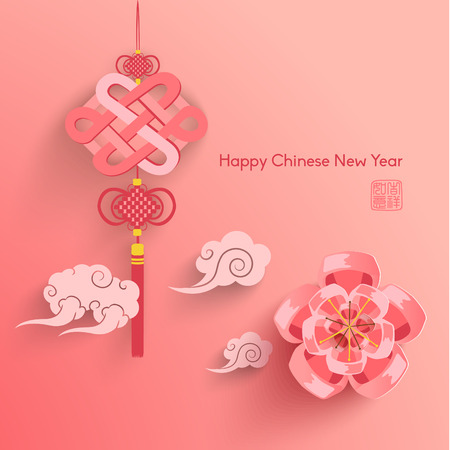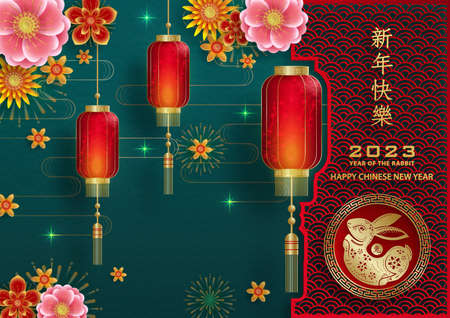Introduction to Feng Shui in British Living Spaces
Feng Shui, the ancient Chinese art of harmonising energy within the environment, has found its way into the heart of many UK homes. This philosophy, rooted in balancing elements such as wood, fire, earth, metal, and water, seeks to cultivate wellbeing and prosperity by shaping the spaces we inhabit. When introduced into British living spaces—be it a Victorian terraced house in London or a cosy cottage in the Cotswolds—Feng Shui’s principles delicately intertwine with the distinctive character and architecture of these dwellings. The intricate cornices, bay windows, and period features often seen in UK homes offer a unique canvas for Feng Shui decorative accessories, allowing homeowners to blend tradition with personal taste. By thoughtfully placing art and objects that embody elemental harmony, residents can create interiors that not only respect British heritage but also invite positive energy and tranquillity into their everyday lives.
2. Balancing the Five Elements: Earth, Wood, Fire, Metal, and Water
Within the gentle embrace of a British home, the ancient wisdom of Feng Shui finds a unique resonance. The five elements—Earth, Wood, Fire, Metal, and Water—each carry their own energy and symbolism, harmonising with the UK’s distinctive landscape and cultural heritage. Understanding these elements is akin to reading the subtle language of your surroundings, inviting balance not only through aesthetics but through feeling.
Earth: Stability and Comfort
The element of Earth grounds us, much like the rolling hills and stone cottages that dot the British countryside. In UK interiors, this is echoed by tactile accessories—ceramic vases from local potteries, terracotta planters brimming with English lavender, or rustic stone coasters. These items do more than decorate; they evoke a sense of rootedness and homecoming.
Wood: Growth and Renewal
Wood breathes life into spaces, symbolising renewal much as springtime transforms an English garden. Oak-framed mirrors, willow baskets, or vintage wooden trunks imbue rooms with warmth and history. Choosing wood from sustainable sources also echoes Britain’s growing commitment to environmental stewardship—a modern take on ancient harmony.
Fire: Passion and Energy
Fire brings vibrancy and transformation. In a British setting, this may be captured in the flicker of beeswax candles on a mantelpiece or the subtle gleam of copper kitchenware. Accents in crimson or burnt orange—perhaps in a tartan throw or a bold piece of wall art—invite vitality while honouring classic local motifs.
Metal: Clarity and Precision
Metal stands for clarity and refinement. It’s found in the delicate filigree of an antique teapot, sleek pewter photo frames on a sideboard, or silvery candleholders reflecting soft evening light. Blending traditional materials with contemporary design, metal accessories offer both practicality and poetic elegance in British homes.
Water: Flow and Serenity
The gentle trickle of water features or blue-toned glassware evokes peace—mirroring Britain’s rivers and misty coastlines. Incorporating curved lines in décor or using reflective surfaces like mirrors brings movement to static corners. Even a simple bowl of pebbles from a Cornish beach can invite calm.
Elemental Harmony: Aligning with British Aesthetics
| Element | Cultural Symbolism | Local Décor Examples |
|---|---|---|
| Earth | Stability & Tradition | Ceramics, Terracotta Planters, Stone Accessories |
| Wood | Growth & Heritage | Oak Frames, Willow Baskets, Vintage Trunks |
| Fire | Vitality & Warmth | Candles, Copperware, Tartan Textiles |
| Metal | Refinement & Clarity | Pewter Frames, Silver Candleholders |
| Water | Serenity & Flow | Glassware, Water Features, Pebble Bowls |
Sensing the Subtle Balance
The magic lies in how these elements intermingle within your living space. By thoughtfully selecting decorative accessories that echo both Feng Shui principles and the spirit of British design—from classic to contemporary—you invite an atmosphere where every object hums with intention and story. This is more than styling; it’s sensing what your home truly needs to flourish.

3. Artful Adaptations: Integrating Feng Shui Through British Décor
Step into a thoughtfully curated British home, and you may be surprised to find the subtle yet profound influence of Feng Shui woven into the very fabric of its design. Across the UK, more homeowners are discovering how this ancient Eastern philosophy can harmoniously blend with quintessentially British aesthetics. Picture a Georgian townhouse in Bath: its bay windows cradle antique glass vases brimming with fresh-cut peonies, carefully chosen for their vibrant colour and uplifting energy. These artful touches aren’t mere decoration—they’re intentional placements designed to draw in positive chi while honouring the home’s historical bones.
Local artisans are also playing a part in this cultural convergence. In the Lake District, for example, families commission bespoke ceramic bowls from neighbourhood potters, finished in earth tones that ground a room’s atmosphere. Each bowl is placed according to Feng Shui principles, supporting the element most needed—be it wood for growth or metal for clarity. These handcrafted pieces tell a story of place and intention, merging local craftsmanship with ancient wisdom.
Heirlooms and antiques further enrich this dialogue between East and West. A Victorian-era writing desk might be oriented to face the door—a classic Feng Shui strategy for empowerment and awareness—while above it hangs a contemporary landscape painting by a local artist, chosen not only for its beauty but for its calming water imagery, balancing fiery elements elsewhere in the room. In these homes, tradition isn’t static; it evolves through conscious choices that invite harmony and flow.
4. Accessorising with Meaning: Popular Feng Shui Objects in the UK
Incorporating Feng Shui decorative accessories into British homes is less about following rigid traditions and more about creating a living space that feels harmonious, personal, and inviting. For many in the UK, these objects are chosen as much for their aesthetic charm as for their reputed energetic benefits. The fusion of Eastern philosophy with British sensibility results in a unique approach—one where subtlety and meaning go hand-in-hand.
Crystals: Harnessing Natural Vibrancy
Crystals have found a special place on British mantels and window sills. Amethyst for calm, rose quartz for love, or citrine for abundance—each stone is selected not only for its spiritual properties but also its ability to complement classic or contemporary interiors. These sparkling accents fit effortlessly among treasured keepsakes or modern art pieces.
Mirrors: Expanding Light and Opportunity
Mirrors are a beloved element in both British décor and Feng Shui practice. They reflect light, create the illusion of space in cosier rooms, and, according to Feng Shui principles, can attract positive energy when placed thoughtfully. British homeowners often favour antique gilt-edged mirrors or sleek modern frames that blend tradition with trend.
Plants: Inviting Nature Indoors
The British love affair with gardening extends indoors through the inclusion of houseplants. Ferns, peace lilies, and even lucky bamboo find their way onto shelves and window ledges, purifying air while symbolising growth and vitality. Plants introduce the Wood element, encouraging renewal and fresh starts within the home’s energy flow.
Popular Feng Shui Accessories in UK Homes
| Accessory | Feng Shui Benefit | Typical British Placement |
|---|---|---|
| Crystals (Amethyst, Rose Quartz) | Calm, Love, Prosperity | Mantels, Window Sills, Bedside Tables |
| Mirrors | Light Expansion, Opportunity | Hallways, Living Rooms above Fireplaces |
| Houseplants (Ferns, Peace Lily) | Purification, Growth | Kitchens, Conservatories, Bathrooms |
| Bells & Chimes | Cleansing Energy Flow | Near Entrances or Garden Doors |
| Water Features (Small Fountains) | Abundance & Calmness | Garden Corners or Sunrooms |
A Subtle Blend of East and West
The key to accessorising with meaning in a UK context lies in blending these Feng Shui elements with a distinctly British touch—think understated elegance rather than overt symbolism. Whether it’s a crystal nestled among family photos or a mirror reflecting a sunlit bay window, these objects become part of the narrative of home: nurturing well-being while honouring personal style.
5. The Role of Placement: Strategies Inspired by British Home Layouts
In the intricate dance between tradition and modernity, UK homes often present unique challenges when introducing Feng Shui decorative accessories. Victorian terraces, with their narrow corridors and high ceilings, or charming countryside cottages boasting uneven floors and deep-set windows, require a mindful approach to placement. The spirit of Feng Shui is not about rigidly adhering to rules but about harmonising energy with the flow of each distinctive space.
Understanding Your Space: From Hallways to Hearths
Begin by observing how light, air, and movement interact within your home. In a Victorian terrace, for example, the entrance hallway sets the tone—consider placing a round mirror on the wall to invite positive chi and visually widen the space. In country cottages where fireplaces dominate living rooms, anchor your arrangement with earth element objects such as pottery or soft textiles on the mantelpiece, grounding the room’s energy.
Small Spaces, Big Impact: Maximising Quirky Corners
British homes are famed for their nooks and crannies. Transform these quirks into features: a crystal ornament in a shadowy alcove uplifts stagnant chi, while a vibrant painting above a stairwell landing draws energy upwards, encouraging vitality throughout the house. Don’t shy away from integrating plants—herbs on kitchen windowsills blend practicality with growth symbolism.
Flow and Functionality: Navigating Narrowness
Narrow passageways, typical in period properties, benefit from strategic object placement to maintain flow. Avoid cluttering; instead, opt for sleek metallic frames or glass vases on side tables to reflect light and keep energy moving freely. Open shelving can display curated collections of stones or art ceramics, infusing intention without overwhelm.
A Personalised Approach
The true magic lies in tuning into your own sense of place. Each British home has its story; allow your choice of decorative accessories—be it a cherished family heirloom or contemporary sculpture—to echo that narrative while supporting Feng Shui’s elemental harmony. Let intuition guide you in balancing beauty with purpose, ensuring every placement feels both natural and nurturing.
6. Nurturing Wellbeing: Emotional and Sensory Impact of Feng Shui Accessories
In the tapestry of British home life, where each room holds memories and moments, Feng Shui decorative accessories offer more than aesthetic charm—they become gentle catalysts for emotional balance and sensory delight. The careful placement of these artful objects, whether a jade plant perched on a sunlit sill in a London flat or a water feature softly bubbling in a Cotswolds conservatory, weaves an invisible thread of tranquillity throughout the space. As one crosses the threshold after a blustery day, the subtle shimmer of a crystal prism scattering rainbows across heritage wallpaper can lift the spirits and foster gratitude for simple pleasures.
Within these curated corners, the mood of the household is quietly shaped. A brass wind chime by the garden door carries its melodic reassurance through the air, creating a sense of connection between indoors and out—a nod to nature, so beloved in British culture. The presence of smooth river stones in the hallway tray or hand-thrown pottery bowls on the mantle offers tactile comfort, inviting touch and grounding energy amid modern lifes haste. These sensory layers encourage mindfulness; as family and friends gather, conversation flows more harmoniously, buoyed by an atmosphere subtly attuned to wellbeing.
In reflection, it is evident that such thoughtful additions are not mere ornaments but companions on the journey toward harmony. They serve as daily reminders—through sight, sound, and touch—to pause and savour the unique rhythm of home. Whether in a Victorian terrace or contemporary townhouse, embracing Feng Shui accessories can nurture an environment where emotional warmth flourishes, connections deepen, and every inhabitant feels gently held within their own sanctuary.


